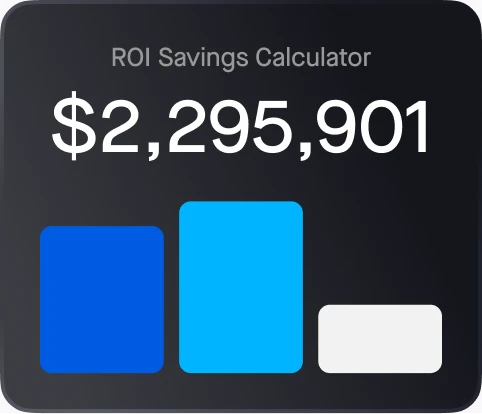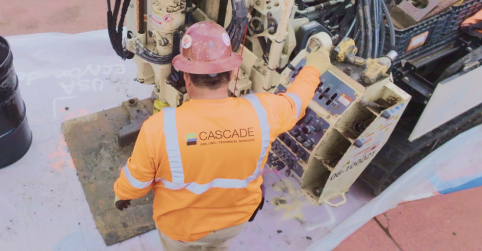Defensive driving is a critical approach to navigating today’s roadways, where safety is a top concern. For fleets, collision avoidance is the ultimate goal. Recent data from the National Safety Council shows that 44,450 people lost their lives in motor vehicle accidents in 2023, underscoring the ongoing dangers that drivers face. Additionally, fleet operators bear substantial financial burdens whenever an accident occurs, especially in regard to liability, vehicle damage, and downtime.
In this blog, we’ll examine the core principles of defensive driving, and explore how the Motive Integrated Operations Platform encourages safer driving habits through real-time feedback and positive reinforcement.
Fundamentals of defensive driving and collision avoidance
Defensive driving is built on several key principles designed to keep drivers safe and mitigate risks on the road — such as those below.
Visibility and situational awareness
A clear view of the road and objects in the driver’s periphery are foundational to defensive driving. Drivers must stay vigilant by adjusting mirrors properly, maintaining a safe following distance, and monitoring blind spots to identify and respond to potential hazards.
Situational awareness extends beyond visibility. It requires understanding your environment, anticipating the actions of other drivers, and making informed decisions to avoid potential conflicts. For example, recognizing an aggressive driver in the next lane or anticipating the sudden stop of a vehicle ahead can make the difference between a safe trip and a collision.
Space management
By keeping proper distance between your vehicle and others on the road, you’ll create a cushion of space that allows for safe maneuvers, whether stopping suddenly, changing lanes, or avoiding obstacles. A minimum following distance of six seconds is recommended for commercial motor vehicles, providing adequate time for drivers to react to unexpected, potential dangers.
Planning and communication
Effective defensive driving starts with planning. This means knowing your route, understanding traffic conditions, and being prepared for unexpected challenges. Communication is also vital. Using turn signals, brake lights, and horns to signal your intentions to other drivers helps prevent misunderstandings and accidents.
How Motive enables defensive driving
Motive’s AI products, such as the Motive AI Dashcam and the AI Omnicam, help instill defensive driving habits in drivers. Here’s how these tools can make a difference.
Enhanced visibility with the AI Dashcam and AI Omnicam
Enhanced visibility is at the forefront of improving road safety and operational efficiency for fleet drivers and managers. Motive’s AI Dashcam and AI Omnicam provide comprehensive coverage and visibility around the vehicle. The AI Dashcam, positioned on the center windshield, provides high-quality footage and visibility that captures details of road conditions, driver behavior, and unexpected events.
Watch the video: Safety in action:
To protect fleets from liability, the Motive AI Dashcam gives managers complete visibility into what happens with every incident. The AI Dashcam also provides drivers with timely alerts, allowing them to immediately alter the unsafe driving habits that put them in imminent danger.
Building on Motive’s AI capabilities, the Motive AI Omnicam extends fleet manager visibility with a 360-degree view that combats the risks associated with blind spots. With the Motive AI Omnicam, fleets get extensive coverage around the vehicle, protecting them from the risk and exposure that comes with sideswipes.
See more with the AI Omnicam:
Real-time event detection and alerts
Motive’s AI-powered dash cams automatically detect and record unsafe events, such as hard braking, close following, and sudden swerving. These events are flagged in real time, allowing fleet managers to review the footage and address dangerous behavior immediately. Taking this approach can prevent accidents before they occur, encouraging safer driving habits.
Customizable coaching and training programs
When an unsafe event is detected, managers can trigger personalized coaching programs tailored to the specific behavior that led to the incident. For example, if a driver is consistently flagged for close following, they can be enrolled in a “space management” training session designed to improve their following distance. Targeted coaching ensures that drivers receive the right training to correct specific unsafe habits.
Comprehensive event management
Motive’s event notifications and trend reporting allow fleets to create an event management system that identifies and records events and facilitates the follow-up process. Fleet managers can easily track which drivers have completed their training and coaching, track improvements, and document any disciplinary actions.
Practical tips for improving fleet safety
Defensive driving, together with Motive’s automated tools, can dramatically improve performance. Here are practical tips to get started:
- Make sure all mirrors are properly adjusted before every trip to maximize visibility and reduce blind spots.
- Encourage drivers to keep at least six seconds of space between their vehicle and the one in front, adjusting for weather and road conditions.
- Set up real-time alerts for risky driving behaviors and address them immediately with targeted coaching.
- Make defensive driving a core component of your ongoing training programs, reinforcing the importance of visibility, space management, and situational awareness.
A defensive driving mindset prioritizes safety, foresight, and responsibility on the road. By combining these principles with Motive’s advanced technology, fleets can reduce the risk of collisions, protect their drivers, and run a safe, smart operation.
See safety in action
Safety starts with a collision avoidance mindset and the right tools to support it. With AI-powered solutions like the Motive AI Dashcam and the Motive AI Omnicam, you can enhance driver awareness, reduce risky behaviors, and protect your fleet with real-time alerts and coaching.
Discover how technology and coaching come together to prevent collisions, reduce liability, and build safer roads for everyone.




